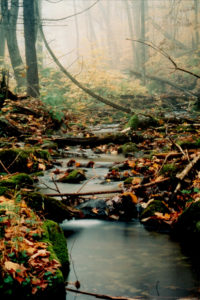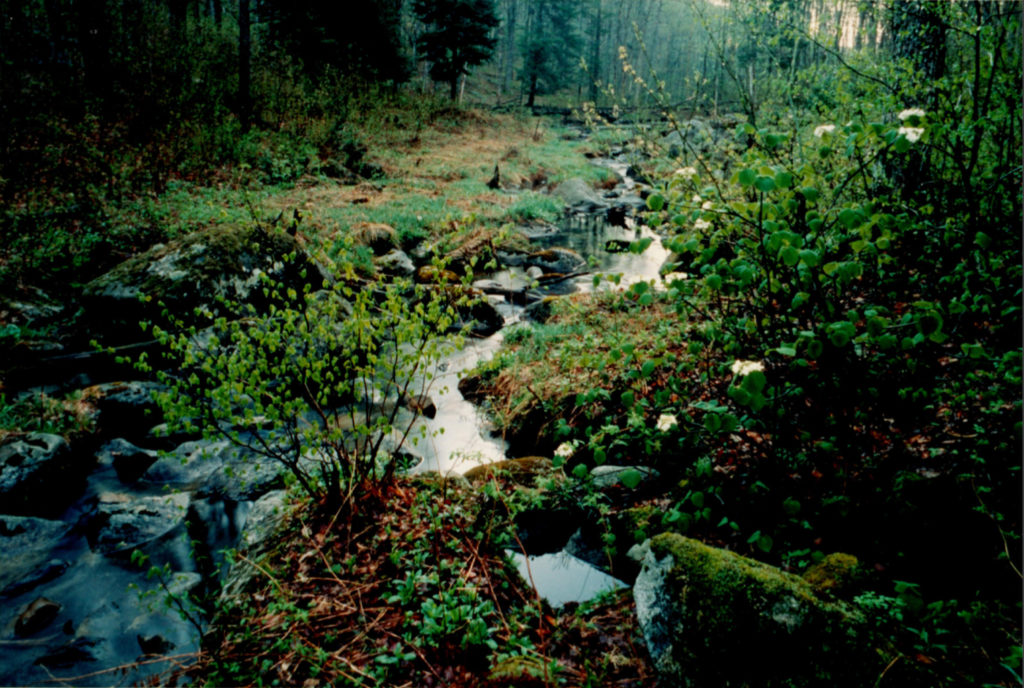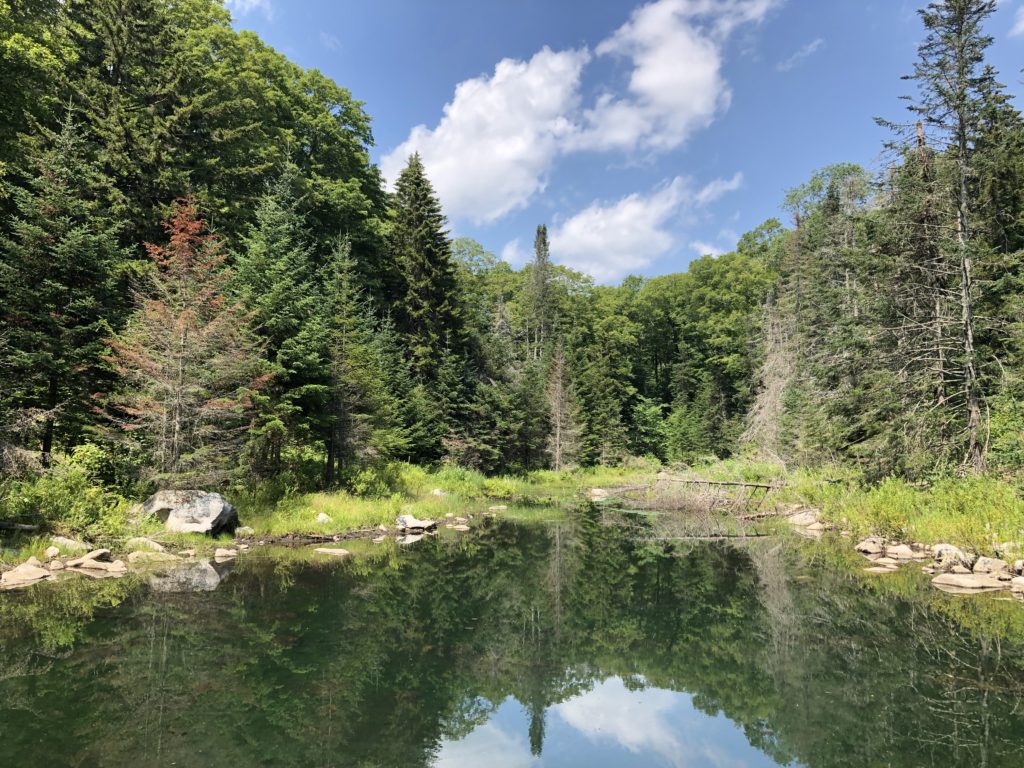Watershed + Wetlands
Streams from our mountain springs feed into tributary headwaters of the Waits River in the Upper Connecticut-Mascoma watershed. The waters that originate at this mountain landscape eventually feed into the Atlantic Ocean. The aquatic habitats provided by our mountain streams and ponds, Class 2 wetlands, and riparian wildlife corridors at Sage Mountain are classified by Vermont’s Department of Environmental Conservation as highest priority for conservation.
Wetlands form the transition between terrestrial and aquatic environments, and contribute significantly to the health, productivity, and uniqueness of the region. Wetlands are especially important because they maintain biodiversity by providing a habitat for a wide range of species. As transitional areas from upland to water habitats, wetlands are important natural resources to protect our environment from natural disasters.




